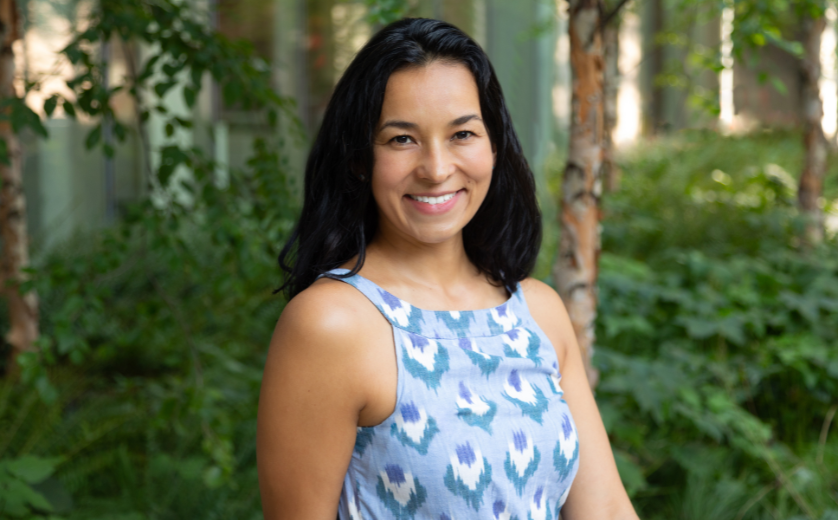A network of community partners in St. Louis, coordinated and funded through the Brown School’s Prevention Research Center, has helped people in low-resource neighborhoods combat the social isolation, lack of physical activity, and food insecurity that intensified during the COVID-19 pandemic. Now, the network is hoping to strengthen its efforts to sustain its impact.
“Every month when the partners meet and I hear what they’re doing, the people who have benefited, and the ideas they’re coming up with, I feel great that we were able to support what they are doing,” said Diana Parra Perez, research assistant professor at the PRC, who has led the effort.
Building Resilient Inclusive Communities (BRIC) is a nationwide program established in 2021 by the Centers for Disease Control and Prevention and the National Association of Chronic Disease Directors as part of COVID relief efforts. They asked the Brown School’s center to organize Missouri’s efforts when state health authorities were unable to take it on. PRC Director Ross Brownson, asked Parra Perez to coordinate the project, and the results have been positive, helping to fund projects like community gardens, safer streets, and reconnecting seniors with their communities. Parra Perez has also worked statewide with the Missouri Department of Health and Senior Services to provide feedback on the state’s aging plan and the state health plan. That includes feedback like partnering with libraries so homebound seniors can get books and internet access.
“COVID amplified the health and social inequities in our region and BRIC is making a difference in our communities due to the outstanding leadership of Dr. Parra Perez and our many partners,” said Brownson, the Steven H. and Susan U. Lipstein Distinguished Professor at the Brown School.
Community partners, too, are enthusiastic about the results, and said Parra Perez’s leadership was key.
“Our project could not have taken place without her,” said John Saunders, executive director of Wesley House, a nonprofit in North St. Louis that used funding from BRIC for a community garden where neighborhood seniors and youth worked together, and for computer training for isolated seniors that allowed them to reconnect with family and friends. The extension to the Wesley House garden produced tomatoes, cabbage, and green beans for its food pantry, which benefited the neighborhood by bringing fresh food to the area, located in a food desert. The intergenerational work also helped bridge the gap between youth and seniors in the neighborhood. “It made a difference,” Saunders said. “It eased the seniors’ anxiety level interacting with young people.”
As COVID limited interpersonal contact, Wesley House used funds from the BRIC grant to train seniors on computer use. The seniors participated in Zoom calls about exercise and healthy eating and were able to interact with friends and family. “It helped cut down those barriers of isolation, especially from COVID,” Saunders said. “It was amazing when seniors opened up a laptop and saw what they could do.” As the area returns to in-person contact, he hopes to resume gardening in the spring.
Another project that benefited from BRIC was Calm Streets, an effort to make streets safer for pedestrians and bicyclists. The project was created by Trailnet, a local nonprofit that used BRIC funding to partner with the Hyde Park Farmer’s market on Salisbury Street, just off a busy interstate highway where cars frequently drive at high speeds off the exit. After assessing the needs for calming on the street, Trailnet proposed removable “bumpouts” to remove parking near crosswalks, and other measures.
“What’s great about BRIC is it has helped us establish new relationships with other nonprofits,” said Cindy Mense, the chief executive officer of Trailnet. “And the funding really helps bring other funding to the table.”
Part of the grant was also used for Trailnet’s work in Spanish Lake, a community in St. Louis County outside of the city. “This grant has helped introduce people in the city and county and find ways they can help one another,” she said. As BRIC funding winds down, Mense is working with Parra Perez to maintain financial support for the efforts. “Collaboration is really brewing, and these things wouldn’t have happened without BRIC,” said Mense, who added that internships with Trailnet are available to Washington University students.
Parra Perez said she hopes BRIC funding will be renewed. “It is a wonderful network, reaching out to sustain community projects and uplift communities,” she said. The Brown School has lent expertise to grant writing for community partners, as well to connect them with the school’s resources like the Evaluation Center to measure the impact of their work. The learning has been a two-way street, she said. “I’ve learned so much from these community-based organizations,” she said. “They know their communities better than anyone.”
